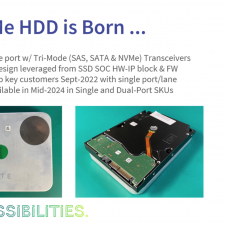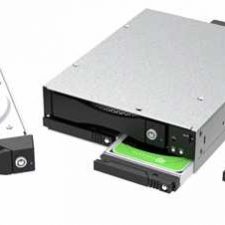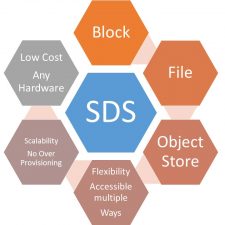Top SDS Object Storage Solutions and Why IBM Rarely Makes the List
I recently ran across an article rating and listing the top Multi-Cloud Software Defined Object Storage solutions. There is nothing wrong with the list. It is pretty solid but it does remind me of an interesting chapter in my career.
Note – IBM’s Object Storage solution runs in the IBM Cloud but can also be deployed on-premise and in Private Cloud networks.
In 2015 I started working for a little known start-up: Cleversafe. Founded in 2004, Cleversafe initially started as a multi-site scale out [and dispersed] storage solution focused on both data integrity and data security. Their storage stack relied on a very interesting and proprietary implementation of a Cauchy Reed Solomon algorithm to ensure both. At the time it was a very innovative and interesting technology. At its conception, storage was served over iSCSI. I do not remember what year exactly but by 2010, the company shifted focus to serving storage over REST and what at the time was the early stages of “object storage.”
Early on, Cleversafe made a name for itself and started to win some very impressive customer deals. They also had an amazing patent portfolio. All of which eventually caught the attention of IBM. And by the Fall of 2015, the official announcement came, IBM was acquiring Cleversafe.
The transition to Big Blue was pretty rough. That isn’t uncommon with acquisitions. The reason for the acquisition was immediately made clear: IBM was behind in the Cloud Computing sector and instead of building a solution from the ground up, they acquired an already established technology. Their focus: the Hybrid Cloud. They needed to catch up to Amazon, Microsoft and Google. What we did not know at the time was that prior to our acquisition, IBM did attempt building its own object storage solution but it either was not progressing quick enough or the project failed to achieve its goals.
Anyway, the first two years passed by quickly. IBM opened up its wallet and we were hiring anybody and everybody with a pulse. The Cleversafe product was not Cloud-ready and we needed to play catch up to the feature set offered by Amazon. Often, corners were cut and some features were lacking in completeness, just so a box could be checked. Also, the infrastructure we were plugging into was from yet another earlier acquisition: SoftLayer. It too was not properly positioned to offer Cloud services and had to fill the holes.
The pieces were just not fitting together. Things were not progressing smoothly. At some point, the object offering went live and we did have early adopters / customers but it wasn’t much. Part of the challenge was convincing customers to choose us over the better known and established competitors. The other challenge is that IBM’s business model has always been Business-to-Business (B2B). Well, at least in recent decades. This alone will limit consumer adoption.
Then in 2017 or so came an internal project nicknamed Project Genesis. Project Genesis was supposed to right all the wrongs and redesign the existing Cloud infrastructure essentially from scratch. It was ambitious. Out of the gate it struggled. Software limitations. Employee churn. Also, a limited understanding of the necessary requirements at the needed scale.
By 2018, that wallet was closing. Employees were leaving the team and their were no backfills. Remaining employees were being stretched thin due to the increased workload and they too were leaving as a result. Things were not looking so great. New customer deals were lacking and it felt like we were there to only support “legacy” and existing customers. What made things more dire was the Red Hat acquisition announcement. Red Hat had their very own and extremely successful Object Storage solution: Ceph. How could our offering ever compete with Ceph? It became clear that our future was limited. And that is why I left in 2019. What has happened since then? I do not know. I sure hope that they worked out the kinks.
To this day, you do not hear much about IBM’s Cloud Object Storage. Technically, you do not hear much about IBM’s Cloud. The advertisements are there but lacking and the fact that they limit themselves to B2B makes it more difficult to attract more consumers. Another thing that you will read on the Internet is that their Cloud services are just too expensive and just don’t perform as well as the other lead compitetors.
![Random [Tech] Stuff](https://koutoupis.com/wp-content/uploads/2022/01/koutoupis-logo-3.png)





